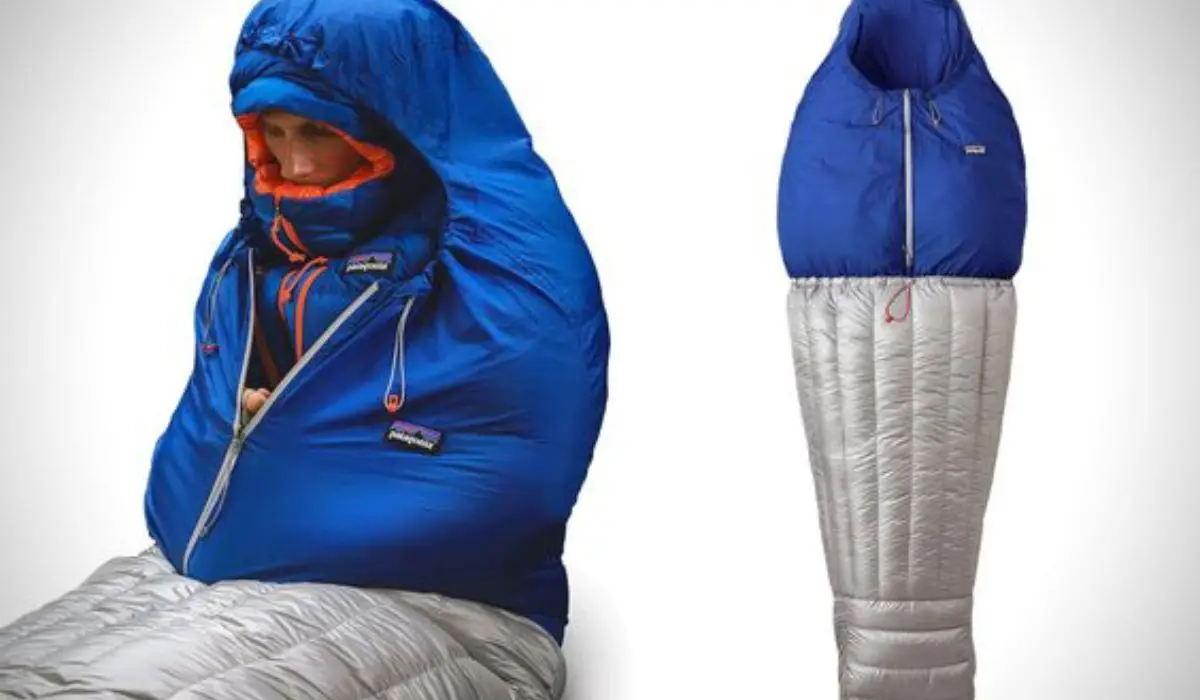
Have you ever wrestled with a stubborn sleeping bag, trying to fold it neatly and compactly, only to end up frustrated and defeated? I know I have.
There’s something uniquely exasperating about the enigma of folding a sleeping bag. It seems like no matter how hard we try, it just never folds the way we want it to. But fear not, my fellow adventurer, because I’m here to share with you the secrets of mastering the art of folding a sleeping bag effortlessly.
Whether you’re a seasoned outdoors enthusiast or an occasional camper, knowing how to fold a sleeping bag properly is a skill that will save you time, space, and frustration. So, let’s dive in and discover the best techniques for folding your sleeping bag with ease!
Key Takeaways:
- Properly folding your sleeping bag is important for compact storage and easy travel.
- Follow the manufacturer’s instructions for folding your specific type of sleeping bag.
- Rolling or stuffing your sleeping bag depends on the type of bag you have.
- Roll your sleeping bag tightly and secure it with straps or alternative methods.
- Stuff your sleeping bag into a stuff sack to save space.
Rolling or Stuffing: Which Method is Best?
When it comes to folding a sleeping bag properly, there are two main methods to consider: rolling or stuffing. The choice between these methods depends on the type of bag you have, each with its own advantages.
If your sleeping bag comes with a stuff sack, it is typically designed to be loosely stuffed for storage. This method helps prevent insulation damage and allows the bag to retain its loft. Loosely stuffing the bag also allows it to breathe, preventing moisture buildup that could lead to mildew or odors.
“Stuffing a sleeping bag is a convenient method for storage. It’s like giving your bag a cozy hug.”
On the other hand, if your sleeping bag comes with straps, it is likely meant to be rolled. Rolling the bag tightly can help compress it, saving space in your backpack or storage area. This method is especially useful for backpacking or when storage space is limited. By rolling your sleeping bag, you can maximize space and ensure it sits snugly in your backpack.
Ultimately, the decision between rolling and stuffing depends on the design and features of your specific sleeping bag. It’s important to follow the expert folding tips provided by the manufacturer to ensure you maximize space and preserve the quality of your sleeping bag.
Expert Tips:
- Always refer to the manufacturer’s instructions for specific folding techniques.
- If your bag comes with a stuff sack, loosely stuff it to preserve insulation and breathability.
- If your bag has straps, tightly roll it to save space and ensure a snug fit in your backpack.
- Consider investing in compression sacks for additional space-saving capabilities.
Steps to Roll Your Sleeping Bag
Rolling a sleeping bag is a simple process that ensures compact storage and easy transportation. By following these easy steps, you’ll be able to roll up your sleeping bag effortlessly.
- Lay the sleeping bag on a flat and dry surface, such as the floor or a camping mat.
- Zip up the sleeping bag completely to ensure an even roll.
- Smooth out any air pockets by gently pressing down on the bag to maximize compression.
- Fold the sleeping bag in half lengthwise, making sure that the edges align.
- Starting from the foot end, tightly roll the sleeping bag upwards, pushing out any remaining air as you go along.
- Use your knees to keep the roll tight and secure.
- If your sleeping bag comes with attached straps, use them to fasten the roll securely. Alternatively, you can use a belt, rubber bands, or rope to hold the rolled bag in place.
Following these easy steps will help you roll your sleeping bag efficiently, saving space in your backpack or storage area and ensuring your bag stays in optimal condition.
Expert Tip:
When rolling your sleeping bag, it’s important to avoid over-tightening, as this can damage the insulation. Aim for a tight and secure roll without putting excessive pressure on the bag.
Steps to Stuff Your Sleeping Bag
Stuffing a sleeping bag is a convenient method for storage. Here’s a step-by-step guide on how to fold a sleeping bag without a bag, making it as small as possible:
- Lay the bag flat on a clean surface.
- Fold the bag in half lengthwise, ensuring the edges align.
- Starting from the foot end, tightly roll the bag, pushing out any remaining air as you go.
- Once the bag is rolled, fit it into the stuff sack provided. If your bag doesn’t come with a stuff sack, you can use a belt, string, or rope to secure it.
This method allows you to fold a sleeping bag really small for efficient storage and travel. By eliminating excess air and using a securing mechanism, you can minimize the size of your sleeping bag, maximizing space in your backpack or storage area. Take a look at the illustration below to see the steps visually:
Expert Tip: When folding your sleeping bag, make sure it is clean and dry to prevent any odor or damage during storage.
Whether you’re backpacking, camping, or simply need to store your sleeping bag, mastering the art of folding it efficiently can make a significant difference. Now that you know how to fold a sleeping bag without a bag, you can save space and keep your gear organized. Next, let’s explore some tips for maximizing space when folding different types of sleeping bags.
Tips for Maximizing Space
To optimize space when packing your sleeping bag, consider a few tips. Whether you have a regular sleeping bag or a mummy sleeping bag, there are techniques you can use to fold or roll it more efficiently.
Rolling a Regular Sleeping Bag
If you have a regular sleeping bag, follow these steps to roll it up and save space:
- Lay the sleeping bag on a flat, dry surface.
- Zip it up completely to ensure an even roll.
- Smooth out any air pockets to maximize compression.
- Fold the bag in half lengthwise, aligning the edges.
- Starting from the feet, tightly roll the bag upwards, pushing out any remaining air.
- Use your knees to keep the roll tight.
- Secure the roll with the attached straps. If your bag doesn’t have straps, you can use a belt, rubber bands, or rope to keep it compact.
If your sleeping bag is equipped with straps, make sure to utilize them to keep the roll secure. This can help prevent the bag from unrolling and taking up unnecessary space in your backpack or storage area.
Folding a Mummy Sleeping Bag
If you have a mummy sleeping bag, the process is similar to folding a regular bag, but with a focus on achieving a tight roll to save space:
- Lay the mummy sleeping bag on a flat surface.
- Zip it up completely.
- Smooth out any air pockets.
- Fold the bag in half lengthwise, aligning the edges.
- Roll the bag tightly from the foot end, pushing out any remaining air.
- Use your knees to keep the roll tight.
- If the bag has straps, secure the roll to keep it compact.
Folding a Sleeping Bag with Straps
If your sleeping bag is equipped with straps, take advantage of them to further compress the bag:
- Follow the rolling or folding technique appropriate for your sleeping bag type.
- Once the bag is rolled or folded, use the straps to secure it tightly.
- Ensuring a secure and compact roll will help save space and prevent the bag from expanding during transportation or storage.
Remember, the key to maximizing space when folding a sleeping bag is achieving a tight and secure roll or fold. By following these tips and techniques, you can make the most efficient use of your storage area or backpack.
Caring for Your Sleeping Bag
Proper care is essential to maintaining the lifespan of your sleeping bag. After each use, make sure to air out your bag to remove moisture and odors. If your sleeping bag is damp, hang it to dry before storing it. Additionally, avoid exposing your bag to direct sunlight, as UV rays can damage the fabric and insulation. Follow the manufacturer’s instructions for washing your sleeping bag, as some can be machine washed while others require hand cleaning.
To fold up your Coleman sleeping bag properly, first, make sure it is completely dry. Lay the bag on a flat surface, ensuring there are no wrinkles or creases. Starting from the foot end, tightly roll the bag towards the hood. Compress any remaining air out of the bag as you roll. Once rolled, secure it with the attached straps or use a belt, rubber bands, or rope if your bag doesn’t have straps.
If your sleeping bag has a hood, there’s a specific method to roll it up. Start by flipping the hood inside out. Then, lay the bag flat and perform the same rolling technique from the foot end towards the hood. Make sure the hood is tucked inside the rolled bag to protect it during storage.
Remember, proper storage and care will help ensure the longevity of your sleeping bag and keep it ready for your next adventure.
Compact Storage and Travel Tips
When traveling or backpacking with a sleeping bag, it’s important to pack it efficiently. Rolling or stuffing your bag can help save space in your backpack or luggage.
For those who prefer rolling, follow the steps outlined in Section 3 on how to roll your sleeping bag. This method is especially effective for sleeping bags equipped with straps, allowing for a secure and compact roll, perfect for fitting into your backpack.
Alternatively, if you have a sleeping bag that comes with a stuff sack, stuffing it is a great option. Section 4 provides detailed instructions on how to stuff your bag. Make sure to remove any excess air and tightly secure it using the stuff sack provided. If your bag doesn’t come with a stuff sack, use a belt, string, or rope to keep it tightly packed.
To further maximize space in your luggage, consider investing in a compression stuff sack. These sacks are designed to compress your sleeping bag even further, allowing for more efficient packing. Compression straps can be used to reduce the size of the sack, helping you save valuable space.
During your travels, it’s crucial to keep your sleeping bag dry to prevent damage and unpleasant odors. If you’re using a stuff sack, check if it has compression straps to reduce the bag’s size even further. If not, place the stuffed or rolled sleeping bag in a waterproof bag before placing it in your backpack or luggage.
Pro Tip: When possible, try to pack your sleeping bag on top of your backpack or luggage to avoid crushing it under other items.
By following these compact storage and travel tips, you can ensure that your sleeping bag is packed efficiently, saving space in your backpack or luggage while keeping it dry and protected throughout your journey.
Frequently Asked Questions
- Q: Can I use a compression stuff sack with a rolled sleeping bag?A: Absolutely! If you prefer rolling your sleeping bag, using a compression stuff sack can further compress and save space in your backpack.
- Q: How do I keep my sleeping bag dry during travel?A: It’s essential to keep your sleeping bag dry to prevent damage and odors. Place it in a waterproof bag or use a waterproof stuff sack before storing it in your backpack or luggage.
- Q: Can I use compression straps with a stuffed sleeping bag?A: If your stuff sack doesn’t have compression straps, you can use external straps or ropes to further compress your stuffed sleeping bag.
Conclusion
Properly folding or stuffing your sleeping bag is crucial for compact storage and easy travel. Whether you choose to roll or stuff, following the manufacturer’s instructions for your specific bag type is essential. By mastering the art of folding a sleeping bag, you can maximize your storage space and ensure your bag stays in optimal condition for future use.
Investing in a compression stuff sack is a great way to further save space. These sacks are designed to compress your sleeping bag, allowing you to pack it even more efficiently. Whether you’re going on a camping trip, backpacking adventure, or simply need to store your sleeping bag at home, a compression stuff sack can be a game-changer.
Remember, each sleeping bag is unique, so it’s important to understand the proper folding or stuffing technique for your specific bag. Following the correct method will help prevent damage to the insulation and ensure your bag stays in top-notch shape for years to come.
Now that you know how to fold a sleeping bag and the benefits of different folding techniques, you can confidently pack your bag for your next outdoor adventure. So go ahead, fold or stuff your sleeping bag properly, and explore the great outdoors with ease and convenience!


